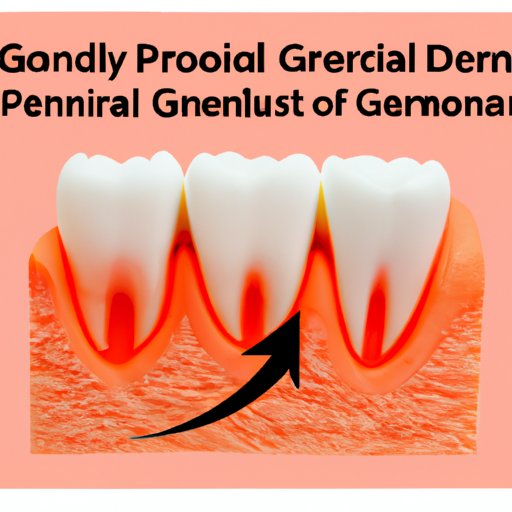
Introduction
Periodontitis is a serious gum infection that affects the supporting tissues around the teeth, including the bone. If left untreated, it can lead to tooth loss and other more severe health issues. Early identification and treatment can help minimize the damage and prevent additional health problems. In this article, we will explore the causes, symptoms, stages, and different types of periodontitis. We will also delve into non-surgical treatments and surgical options, natural remedies, and lifestyle changes that can help manage the disease.
Understanding Periodontitis
Periodontitis can be caused by various factors, such as poor oral hygiene, smoking, genetic susceptibility, and underlying health conditions such as diabetes. The disease starts with gingivitis, which causes inflammation of the gums. If left untreated, it can advance to periodontitis and cause severe damage to the bone and tissues supporting the teeth.
Some of the symptoms of periodontitis include bad breath, receding gums, bleeding gums, loose teeth, and tooth loss. The disease can also progress through stages, namely, mild, moderate, and severe. Understanding these stages and symptoms is crucial in identifying the disease early and seeking treatment promptly.
Diagrams and illustrations may also help in understanding the anatomy of the teeth and the progression of the disease. Visiting a dental hygienist or dentist for regular checkups can also aid in early identification and treatment of the disease.
Non-Surgical Treatments for Periodontitis
Non-surgical treatments such as scaling and root planing, oral antibiotics, and mouthwashes can help treat periodontitis before it becomes severe. Scaling and root planing involve removing plaque and tartar from the teeth and root surfaces, smoothing out rough spots. Oral antibiotics and mouthwashes are used to eliminate bacteria that cause periodontitis.
Other non-invasive treatments may include laser therapy, locally administered antibiotics, and antimicrobial gels. However, early intervention is crucial in preventing the disease from progressing.
Surgical Options for Severe Cases
If periodontitis progresses to the severe stage, surgical options such as flap surgery, bone or tissue grafts, and guided tissue regeneration may be necessary. Flap surgery involves lifting the gums and removing tartar from the teeth’ root surfaces. Bone or tissue grafts involve replacing the bone or gum tissue destroyed by the disease. Guided tissue regeneration involves using specialized membranes that encourage the growth of bone and tissue.
Each surgical option has its benefits and risks, and the dentist will recommend the most suitable option for each patient’s needs.
Natural Remedies for Periodontitis
There are several natural remedies for periodontitis that may help manage the disease, such as oil pulling, use of herbal remedies, and vitamin supplements. Oil pulling involves swishing oil around in the mouth to remove harmful bacteria. Several herbal remedies such as aloe vera, tea tree oil, and echinacea have shown to reduce gum inflammation and promote oral health.
Vitamin supplements such as Vitamin C, D, and K may also aid in maintaining healthy teeth and gums. However, it is essential to consult with a dental professional before trying any natural remedies to ensure they are safe and effective.
Lifestyle Changes for Managing Periodontitis
Lifestyle changes may also help manage periodontitis. These include dietary changes, stress reduction, regular dental visits, quitting smoking, and other habits that promote oral health. A diet rich in fruits and vegetables and low in sugar and carbohydrates can help improve oral health.
Stress reduction techniques such as yoga and meditation can also aid in managing periodontitis by reducing inflammation and boosting the immune system. Regular dental visits can ensure early identification and treatment of the disease, while quitting smoking can significantly reduce the risk of periodontitis.
Living with Periodontitis
For patients living with periodontitis, pain management, emotional support, and long-term disease management may be necessary. Pain can be managed with over-the-counter or prescription pain medication. Emotional support from family and friends, or a professional therapist, can help patients cope with the disease’s emotional impact.
Long-term disease management may include regular dental visits, surgery, and other treatment options that the dentist may recommend. Patients can also explore support groups and other resources to help them understand and manage the disease effectively.
Conclusion
Periodontitis is a severe gum infection that can lead to tooth loss and other health conditions. Early identification and treatment are crucial in preventing the disease from progressing. Non-surgical treatments, surgical options, natural remedies, and lifestyle changes may all help manage periodontitis. Patients living with periodontitis may also benefit from pain management, emotional support, and long-term disease management. By seeking proper treatment and adopting habits that promote oral health, patients can manage periodontitis and improve their overall quality of life.




